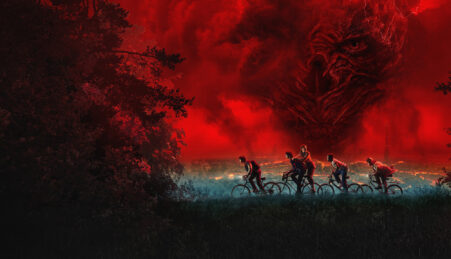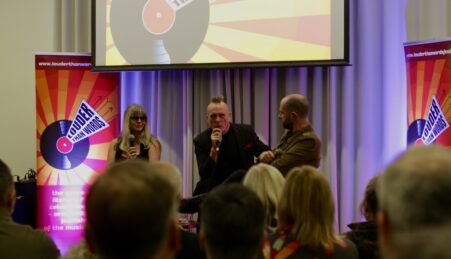 By Jordan Noton
By Jordan Noton
Technology brings us all closer together. We’re safe in the knowledge that our friends and family are just a text or a phone call away. We’re eager to share our day-to-day lives with a network of acquaintances and whether we like to admit it or not, lots of us are searching for someone special.
On the surface, it seems easier than ever to find love through the power of technology. We can build profiles on sites like OKCupid, Match.com and Plenty Of Fish, noting down our hobbies and interests, likes and dislikes, favourite films, music, food and more. For some, constructing an attractive profile is more important than writing a great CV. We contemplate how much information we really want to share – what will put us in a positive light and what should be hidden away from the public eye. However, we search for like-minded, potentially suitable partners based on arbitrary percentages and match calculators, letting the service break people down into a number. No matter how beautiful someone looks or how interesting they sound, we’re scared away by the negative ratings that scream ‘MOVE ALONG’. We take, pick and choose photographs of ourselves that flatter us the most, playing with filters, lighting and angles to achieve the desired effect; if I throw in a club night photo of myself partying with some friends, people will see that I’m down for a good time? If a picture says a thousand words, you want to create the most entertaining story possible, right?
This brings us to Tinder – the hugely popular smartphone app that basically relies on images alone to match people up. Though you can fill in a short summary of yourself, many users leave their biographies blank, occasionally tagging their Instagram or Snapchat usernames for all to see. We’re presented with a pile of people – initially represented by a single photograph – and told to swipe left or right depending on whether we’re passing or liking them. We push for self-confidence and acceptance of others, yet we decide who we want to speak to based on how attractive they are, literally tossing ‘ugly’ or undesirable people out of the way and off to one side. It’s all a bit hypocritical.
And now there’s a new kid on the block. Following hot on the heels of Tinder, happn is an app that allows you to like and match with people just like Tinder, with one major difference. Although Tinder allows the user to search for people in a radius of their choosing, casting the net out around them, happn flags up people who you’ve crossed paths with in real life. Rather than having a loose idea of where your match is, you’re given a specific place and time where you shared the same space with someone. The concept is both wildly interesting and kind of terrifying, with so many potential questions raised about user safety. Could the app be used to stalk and track people, allowing a violent individual to scope out new victims from a mobile phone? But I’ll hang back on scaremongering for now, for the app has opened up some very revealing ways of looking at how we use these apps and services and how we operate within a smartphone society.
Going back to the previous examples of social networks with a dating slant, it’s interesting to see how we behave differently between services. Whereas dating sites aim to pair people up in happy relationships and help them find love, Tinder has garnered a reputation of facilitating much looser arrangements. Plenty of people have used the app to set up flings and one night stands, to the point where some users have to explicitly state that they’re NOT after such things. But is this liberal sexuality a product of Tinder’s structure or is it a symptom? It’s hard to imagine that one-off encounters and the all-too-common ‘dick pic’ are spread as frequently on OKCupid as it is on Tinder. Yes, people act very differently between the two, but it’s clear that the face-value matchmaking of Tinder encourages users to behave in a much more casual, laid-back way. OKCupid feels like the romantic equivalent of a job application with its personal questions and fields to be filled in. Tinder is all about having risk-free, no strings attached fun with the possibility of something more.
It’s also arguable that Tinder is much more enticing to a younger person than a dating site because of this mentality. The popularity of the app is ridiculous, awakening a curiosity amongst the masses. It’s easy to use and it’s free, so you might as well try it – you’ve got nothing to lose. Whether you find yourself over it all in a couple of days or sat open-mouthed in solitary swipe-fests, jaw hanging limply as you follow the Tinder rabbit hole deeper… well that’s not important. What matters is that something made you take the leap, put yourself out there, up for consideration by hundreds of total strangers.
If alcohol gives us the liquid confidence to buy the pretty girl at the bar a drink or ask the hot guy to dance, then our smartphones undoubtedly give us a virtual confidence that allows us to throw ourselves out into the digital dating scene. Take a bus, walk down the street or stand around in town and look at the sheer number of phones clasped by clammy palms. How many of those people do you bet are on Tinder or a dating site? This is where happn becomes so interesting. People are happy to try it out the same way they did with Tinder, but will they become aware of the situation around them? Will they find that there are dozens, hundreds, thousands of lonely people like themselves, walking around looking for love? Will they look at passengers on the trains or fellow customers in the shopping centre the same way again?
And with this virtual confidence being shaken, one has to ask: How much are we really comfortable with sharing? Is happn a step too far? Is the veil of pseudo-anonymity beginning to slip? Why is it that people feel comfortable coming on too strong or snapping their sordid body parts over the internet, when they wouldn’t do the same in actual life? And for the youth of today, are the chances of finding love in the physical world now slim to none? We’ve got a lot of questions to answer… but for now, we’ll return to the safety of our smartphone screens.
Jordan Noton is a third year English and Film student at MMU who writes about gaming, film, media and current events. You can read his blog at jordannotonblog.blogspot.co.uk and follow him on Twitter @jordanjabroni






Leave a reply